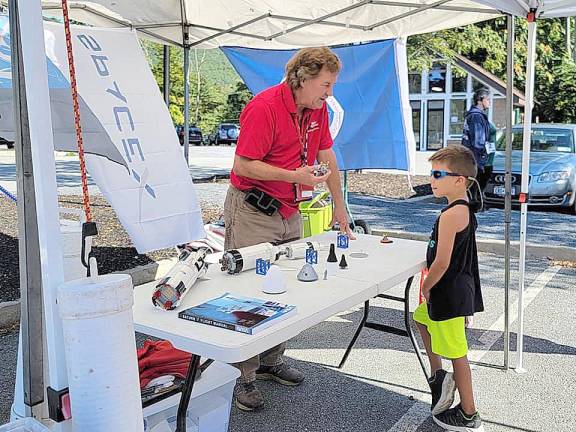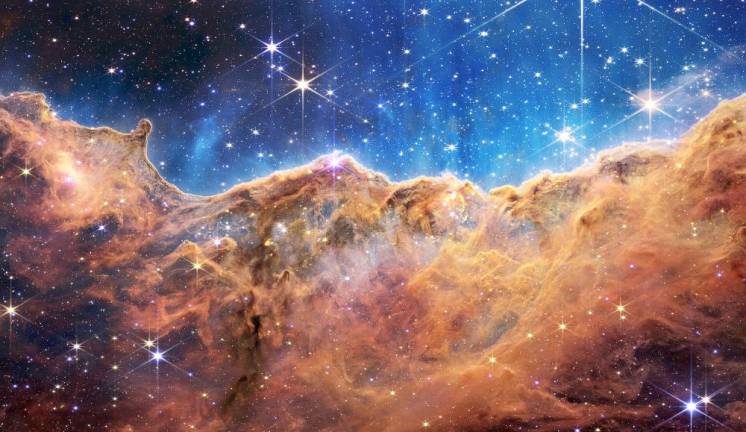NASA representative brings galactic news home to Warwick
Warwick. Jim Hall, volunteer NASA Ambassador, provides information about NASA projects at the Greenwood Lake Farmers Market on Saturdays


Master Gardener Jim Hall is a member of Cornell Cooperative Extension, created in 1914 as part of the U.S. Department of Agriculture’s land grant university system to provide continuing education to people in their communities. The land grant institution in New York is Cornell University, one of the non-farm product exhibitors at Lakeside Farmers Market in Greenwood Lake each Saturday.
But Hall wears many hats. He is also an official NASA Solar System Ambassador, one of 900 Ambassadors who teach, lecture and provide presentations and studies for NASA’s volunteer program based in NASA Jet Propulsion Laboratory in Pasadena, California and Caltech University.
This time he is explaining the photos being sent to Earth from both the Hubble and Webb telescopes. On April 24, 1990, the space shuttle Discovery lifted off from Earth with the Hubble Space Telescope nestled securely in its payload bay. The following day, Hubble was released into space, ready to peer into the vast unknown. The James Webb telescope was successfully launched from the European Space Agency in French Guiana on December 25, 2021 aboard a French Ariane 5 rocket.
“Hubble sees like human beings do, only a tiny portion of the available light spectrum, but Webb sees in infrared only, which the human brain is not able to interpret,” Hall said. “Webb’s infrared optics allow it to see through dust, through the cloud patterns that have obstructed the view of what’s really out there among stars and planets in space.”
After delivering the images to NASA’s receiving stations, high powered computers reinterpret Webb’s images, translating the infrared images to what humans can see. Webb’s telescope can see planets and other bodies in our solar system to determine their origin and evolution and compare them with exoplanets, planets that orbit other stars. Hubble’s size is about 3-4 meters in diameter, while Webb is about twice Hubble’s size, at about 6.5 meters across. Webb’s mirror is comprised of 18 gold-plated hexagonal deployable segments, and its five-layer deployable sunshield is the size of a tennis court.
To learn more about NASA’s current or upcoming projects, go to Lakeside Farmers Market and speak to Ambassador Jim Hall who will take the time with everyone, no matter how young or old, to explain the latest events.
Story contributed by Peter Lyons Hall
Webb’s infrared optics allow it to see through dust, through the cloud patterns that have obstructed the view of what’s really out there among stars and planets in space. - Jim Hall